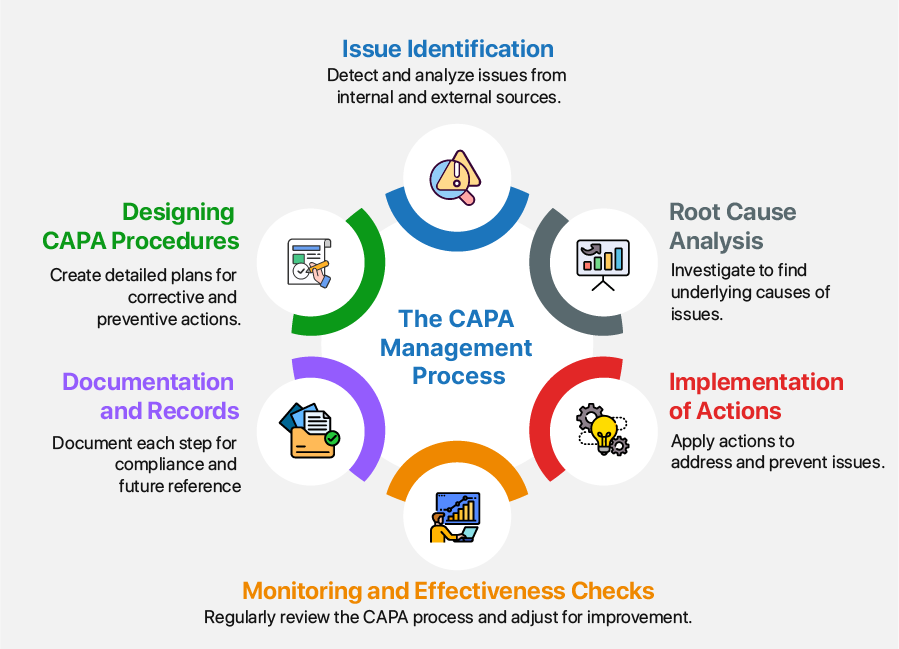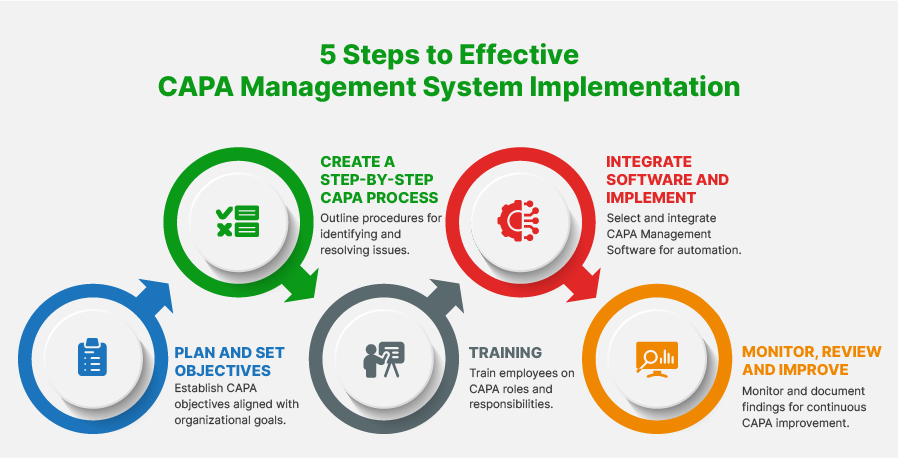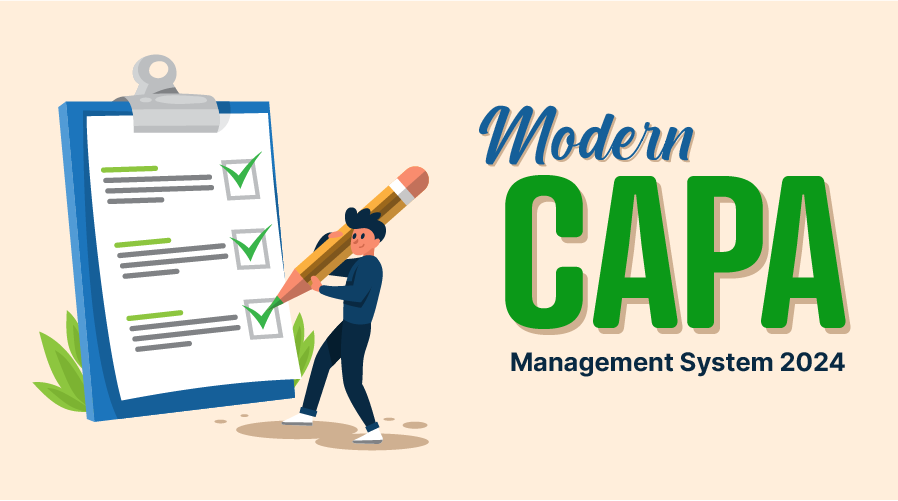If you are a business organization in 2024, you have most likely come across quality management and compliance standards that regulate your industry. When you have stringent guidelines, you need an effective system to direct the process. This is where CAPA management comes in.
CAPA Management systems are intertwined with all your business processes and help correct and prevent issues that arise. They must align with your organization's short and long-term objectives and must integrate smoothly with other systems in place.
In this article, we will explore CAPA Management systems, how they work, and how you can implement them in your organization.
What is a CAPA Management System?
Corrective and Preventive Actions Management or CAPA Management systems is a framework that helps you fix errors and issues in a systematic manner. It helps you identify issues proactively and enables you to correct them when they occur and prevent them from reoccurring.
CAPA Management System is essential for every organization because it directly contributes to the quality and safety of what you do or make. It ensures that your products and services are free of issues or potential malfunctions. This allows the processes in your organization to be efficient.
Additionally, establishing a CAPA system is a vital step for compliance tracking in your organization. All industries are regulated strictly by standards and laws to ensure safety, quality, and reliability. Standards like the ISO 9001, ISO 14001 and other local and international regulations require you to have a CAPA system in place.
Elements of CAPA Management Systems
Let's now look at the elements that form the CAPA system and why each one is important and relevant in improving the quality of CAPA within your organization.

1. Identifying Issues
The first element in the CAPA process is the system to identify past and potential issues. These might be situations that affect the quality, safety or effectiveness of your product or service. Identifying issues helps you be proactive as you can apply corrective and preventive actions in time to mitigate potential risks.
The identification process involves gathering data from various sources across the organization and externally. This element is essential as you need to accurately identify issues to set up a strong foundation for your CAPA system.
2. Designing CAPA Procedure
Once issues are identified, the next part of the process is to design a procedure. This involves creating a detailed plan for CAPA corrective actions with an understanding of the root causes of issues and a systematic approach to solving them.
This element is integrated with the principles of the change management process to ensure that the corrective actions are applied in a controlled manner across your organization.
3. CAPA Management Software
CAPA Management Software is a tool that facilitates the entire CAPA process, from issue identification through to resolution and documentation. This software helps you streamline all the processes related to the management of corrective and preventive actions in your organization. It is a centralized platform that makes information available and accessible organization-wide. It also allows you to track actions and progress in real-time.
The entire CAPA procedure is made smoother with CAPA software as it maintains consistency and comprehensive records. This software can also integrate with workflow management software to ensure corrective and preventive actions are incorporated into everyday operations.
4. Documentation and Records
Documentation and records form the foundation of the CAPA system. Each step taken, be it identifying issues or implementing corrective actions, must be meticulously documented. The CAPA document provides you with tangible records of all actions, it provides proof of compliance with regulatory standards and is a reference for future CAPA activities.
5. Monitoring and Effectiveness Checks
The CAPA Management System is built on the principle of continuous improvement. This means that you need to review and monitor the effectiveness of your system regularly. This must include CAPA audits and quality inspections to ensure that all issues in your organization have been addressed and no new problems have arisen.
The results of the inspection must be carefully noted in CAPA reports. These reports will then become part of the CAPA-related documentation. This element gives you a feedback system and highlights areas that need further attention and adjustment.
How to Implement CAPA Management System in Your Organization?

1. Plan and Set Objectives
Before setting up a CAPA Management system, take time to plan and set clear objectives which align with your organization's goals. You can prioritize areas for improvement in CAPA implementation by conducting a risk assessment.At this stage, also set up measurable objectives, and be realistic with your expectations considering resources and timelines.
It is also a good idea to engage stakeholders from different departments in your organization to get a more comprehensive view of potential problems. This will help you create effective objectives for your CAPA process.
2. Create a Step-by-Step CAPA Process
Developing a CAPA procedure involves outlining all the steps you will follow to implement corrective and preventive plans and procedures. In this step, you will define transparent processes to identify issues, investigate them, and create incident reports. This defined process will ensure clarity and efficiency when problems arise.
You must also develop frameworks for all the corrective and preventive actions to be taken. This framework must clearly mention CAPA tasks, assign responsibilities, and establish a monitoring system. The framework must be shared across the organization to ensure all stakeholders and employees are on the same page.
3. Training
Training is needed to ensure that your team understands the CAPA system and its implementation procedures. Each team member must be aware of their roles and responsibilities within the system. A good training program would be tailored to different roles within the organization and would have practical simulations to reinforce learning.
4. Integrate Software and Implement
The next step is to select and integrate CAPA Management Software that fits your organization's needs. The software would help you automate processes, making it easier to track and manage corrective actions. Once the software has been selected, migrate existing data into the new system, train employees to use it, and roll it out organization-wide.
5. Monitor, Review and Improve
Make sure that you monitor the performance of CAPA systems regularly through audits, reviews, and customer feedback. The findings of these must be carefully documented in CAPA reports, which must be analyzed for trends such as recurring issues and improvements. Data for monitoring can be collected from various sources, including workflow management systems,calibration management software, OHSMS systems, and so on.
Use your findings to improve and adjust the CAPA process and create a feedback loop that all stakeholders can contribute to.
Final Thoughts
A CAPA management system can help you streamline all CAPA processes you have set up for your organization. By setting up plans, processes, and automation software for all corrective and preventive actions within your organization, you can establish a culture of improvement and compliance.
To understand the impact of successfully implementing a CAPA Management System at your workplace, read this news of our Client and how CAPA helped them become more efficient in their processes






























